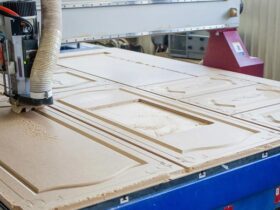Many will say that there is nothing easier than preparing a solution for plaster. You just need to add the required amount of water to the finished mixture, which is sold in each construction store. But the professional builder knows that this is not as simple as the builder-amateur may seem, the matter. After all, plasters are of different purposes, for example, internal or facade, for rooms with high humidity or for thermal insulation, and for each use has its own preparation features. And finished solutions sold in stores are necessary only for small repair work.
What is needed to prepare a solution for plaster? One way or another, a solution for plaster consists of sand, which serves as a filler. Sand should not contain stones and, if necessary, you need to sift it. The binding material of the solution is mainly used cement (less often clay or gypsum). The proportions of the addition of cement can be from 1:10 to 1: 3 or more. The more cement, the greater the strength of the plaster and moisture resistance, so solutions with a greater proportion of cement are used for plaster facades and rooms with greater humidity.
But the cement-sand plaster has a drawback-a lot of thermal conductivity, so the walls of the rooms will sweat and mold will appear. As a result, for internal work, part of the cement is best replaced with clay, then the walls will not be so cold. Clay is also used to give plasticity to the solution, for facade work and in rooms with high humidity, lime is used for this. In order for the applied plaster to quickly harden in the solution, add a little gypsum. This is used, for example, when plaster slopes.
Experienced plasters to check the correctness of the proportion of the solution, take a little solution in the hand and squeeze moisture from it, while lumps should remain in the hand with a thickness in a cigarette. If the lump in the hand remains thicker than necessary, then the solution is skinny, that is, more than the proportion of the sand, if the lump is thinner or the whole leaky, then the solution is too fat, that is, there is little sand. This method proven over the years and today remains the most accurate way to measure the quality of the plaster.








